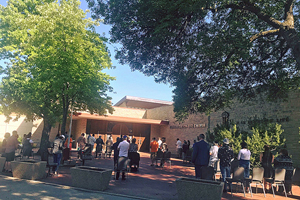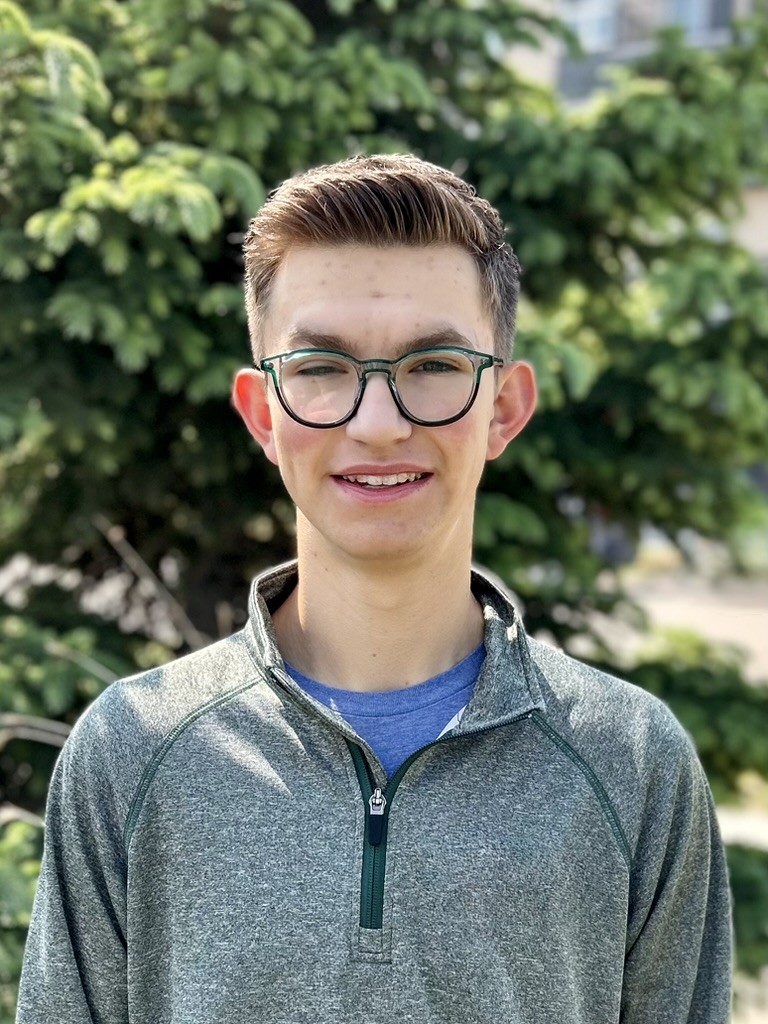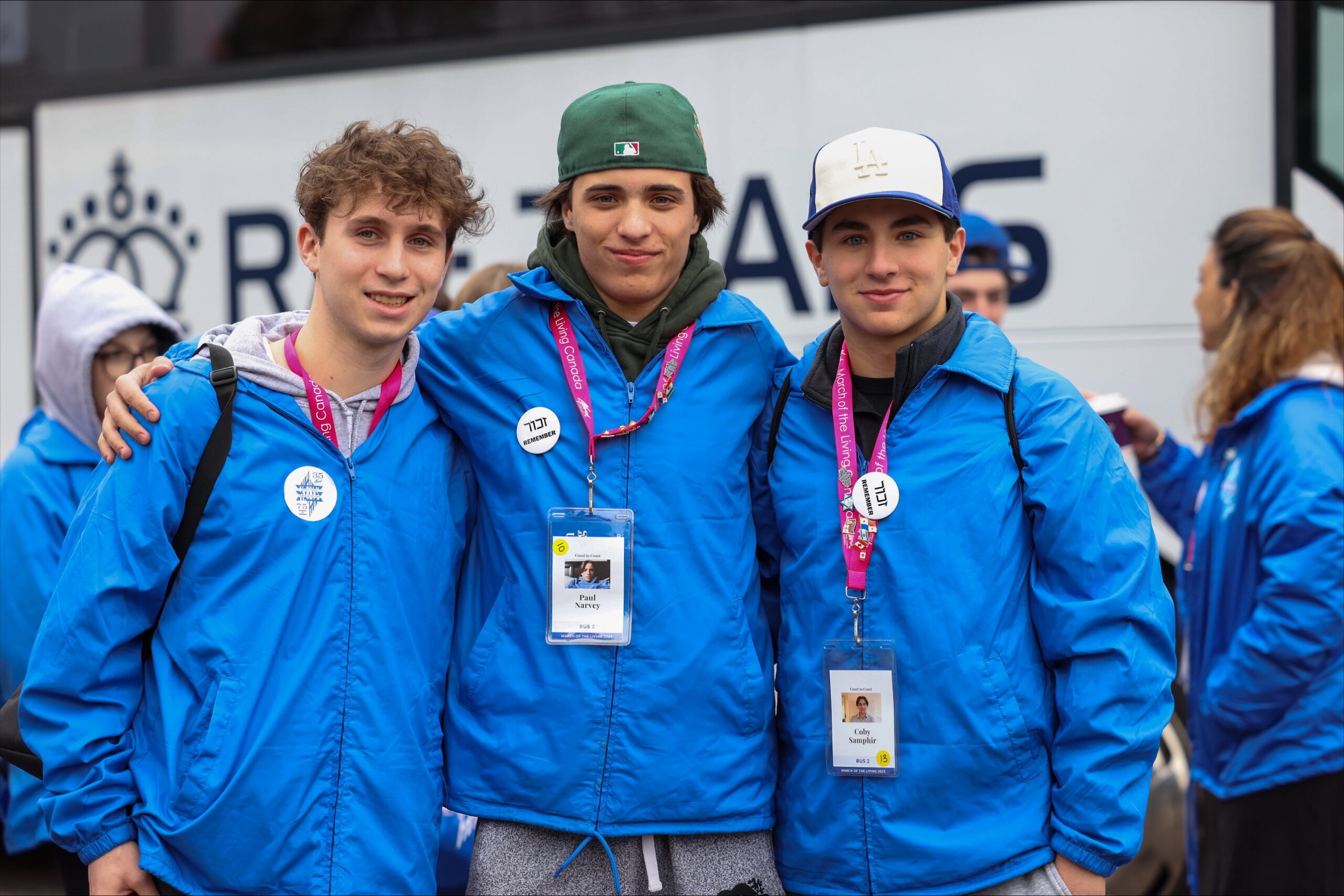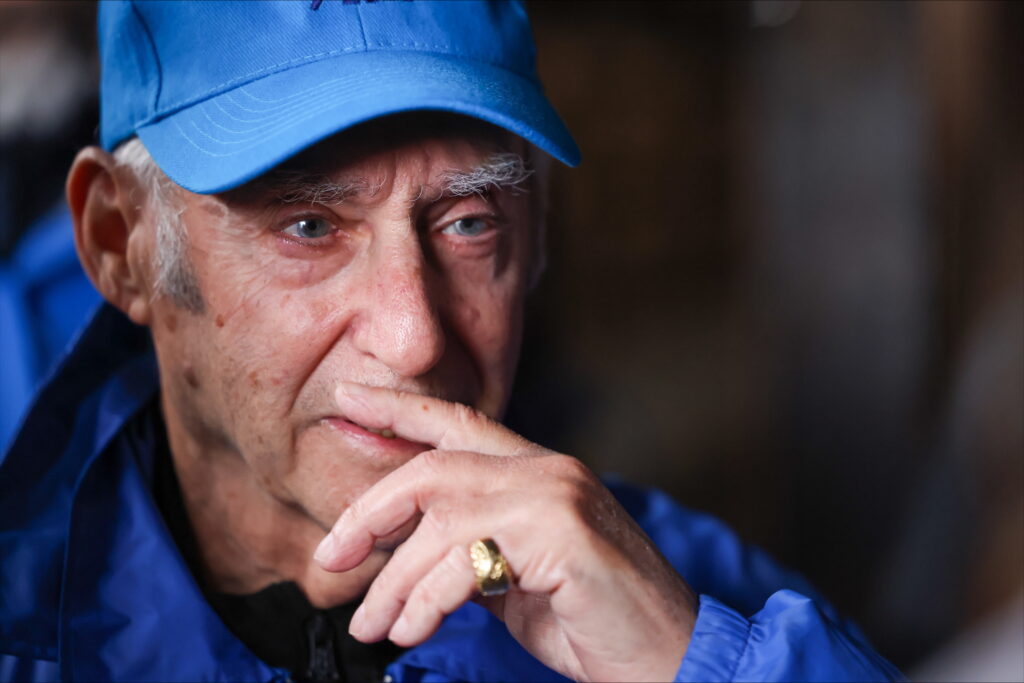Local News
Synagogues working on Yom Tov plans with minimal in person attendance

By MYRON LOVE
It is most definitely an understatement to say that this will be a yom tov like no other. In my last year’s reporting about high holiday attendance at Winnipeg synagogues (including services held at Camp Massad) in The Jewish Post & News yearly survey of high holiday synagogue attendance I noted that about 4,500 Jewish Winnipeggers at least could be found in shul – at least at peak times – for shofar-blowing, Kol Nidre and yizkor.
This year, however, – due to COVID-19 – in-person attendance will likely be no more than 500.
To begin with, there will be two fewer options: Camp Massad, which usually hosts services for one day of Rosh Hashonah, will not be having any services – and the Saul and Clarabelle Simkin Centre, which has made a practice of including family members of residents in the synagogue services, this year – due to government pandemic regulations – will be restricting services to residents in their units.
“As we did for Pesach and Shavuos, we will be videotaping parts of the Yom Tov services with our chazan, Stephen Hyman, and we will be broadcasting them in each of our five units,” says Marilyn Regiec, one of the spiritual health support staff at Simkin. “We will be doing the same thing for Sukkot.”
Regiec will be leading the services – with assistance from Aviva Tabac. Regiec also would like to extend a grateful thank you to Barry Kay and his Cherry Tree Productions for doing the video-taping.
As for our community’s largest congregations, both Congregation Etz Chayim and the Shaarey Zedek will be offering virtual Yom Tov services – just as they have since the province went into lockdown in late March.
“We still have to be cautious,” says Ian Staniloff, Congregation Shaarey Zedek’s Executive Director. “Although the government has raised the maximum number of people who can gather indoors to 30% of capacity or 500 (whichever is less) and we may allow some in-person attendance, all of our High Holiday services will be live-streamed.”
(Last year, the Shaarey Zedek reported an attendance of more than 1,700 for the High Holidays.)
“We have begun asking the members of our congregation if they would be interested in attending in person, but there has not been much response yet. If we do have some people who would want to come, we would limit the numbers, have people at the door to take their temperatures, maintaining social distancing and sanitizing the seats.”
Staniloff adds that the synagogue has a new set of mahzorim that would be distributed to people who are following online so that they could better follow the service.
He points out that Shaarey Zedek has been livestreaming services for several years now.
He further adds that, although the synagogue has been closed to the public since the lockdown began, Shaarey Zedek will soon begin to host B’nai Mitzvahs again – including some that were scheduled for the spring and had been postponed.
“We will be limiting the number of people in attendance to 50 and requiring everyone to wear masks except when called to the Torah,” he notes. “We will be maintaining social distancing.
“And, rather than buffet kiddushes, we will have servers behind plexiglass partitions.
“We will be trying to phase our services back in on a smaller scale at first and see what shortcomings we may have to address.”
Congregation Etz Chayim (where High Holiday attendance last year was about 850) will be offering only a virtual service this year – with the exception of ten people to form an in-person minyan.
“After careful consideration, for the safety of our members and Clergy, and given the uncertainty of distancing requirements, Congregation Etz Chayim concluded that we must offer our High Holiday Services online this year,” writes executive director Jonathan Buchwald in a letter to congregation members.
“While services are going to look, sound and feel very different than what we are used to, Rabbi Kliel, Cantor Tracy and our entire Ritual team will offer a most meaningful and memorable “Virtual Sanctuary” for Rosh Hashanah and Yom Kippur”. Our own Virtual Voices choral ensemble under the direction of Sarah Sommer will bring a special depth and beauty to our services. We are also excited to announce that we will be using a new Mahzor this year, made possible by the very generous gift of a member family.
Also in Etz Chayim’s planning is an outdoor patio Selichot service (Saturday, September 12); Erev Rosh Hashanah Mincha and Ma’ariv services (Friday, September 18); and Tashlich the 2nd day of Rosh Hashanah (Sunday September 19) – weather permitting.
Rounding out our community’s Conservative congregations is the Chevra Mishanyes congregation in Garden City. The Chevra Mishnayes Synagogue is planning on having in-person services for the High Holidays but, congregation President Marshall Kneller reports, “we are not sure what it will look like yet. We are still working on the details in consultation with our members.”
Temple Shalom, our community’s only Reform Congregation, will hold high holiday services entirely online – accessible either via a Zoom link or streamed live on the congregation’s website: , or on Facebook Live at -– as has been the practice for Shabbat services for the past several months. Ruth Livingston, the congregation’s co-President, reports that certain parts of the High Holiday service will only be available online for Temple Shalom members.
For Orthodox congregations in the city, virtual services are not possible. The board of Adas Yeshurun Herzlia congregation – our communty’s largest Orthodox shul – is still working out the details for Yom Tov. “We plan to be open and have services indoors,” says President Jack Craven. “We are considering shorter services for Rosh Hashonah and may have two same day services if time permits.”
He notes that attendance will be restricted to 50 or, possibly 75 people (now that the province has raised the maximum number of people allowed in an indoor venue) and masks will be mandatory. (The sanctuary under normal circumstances can accommodate up to 300.)
The Lubavitch Centre resumed twice-daily minyanim several weeks ago. “We have even hosted three bar mitzvahs over the past few weeks,” reports Rabbi Avrahom Altein, Chabad’s long time spiritual leader in Winnipeg. “We have moved the women’s section out of our big shul, are only allowing family members to sit together and, for kiddushes, all of the food is prepared and packaged ahead of time with people eating at their tables.”
What will make preparing for Yom Tov a little more difficult, he notes, is that the Lubavitch Centre traditionally doesn’t sell seats. “We are going to have to try to get people to register this year,” he says. “We could take out the tables to create more room – but we have to be careful about numbers. We will have lesser numbers though.”
And, whereas the tradition is that men being honoured with aliyahs come up to the bimah, recite the brachas while standing beside the Torah reader, and then follow along as the Torah reader reads, now those receiving aliyahs will say the bracha, then sit down again.
In north Winnipeg, the three Orthodox shuls are the Chavurat Tefila Congregation in West Kildonan, the Talmud Torah Beth Jacob Synagogue on Main Street and the House of Ashkenazi on Burrows Avenue.
The House of Ashkenazi has, over the past few years, been open only for morning minyanim during the week (and Sunday) and for Yom Tov. President Gary Minuk reports that the congregation is planning to restart morning services in mid-August and is planning on High Holiday services. Masks will be compulsory.
The Chavurat Tefila Congregation began having Shabbat morning services and yahrzeit minyanim again in late May. Masks will be on hand at Yom Tov for those who require them and hand sanitizer is also by the entrance.
The Talmud Torah Beth Jacob’s plans are still uncertain.
Local News
Further to the Simkin Centre’s financial situation

By BERNIE BELLAN A while back I published an article about the deficit situation at the Simkin Centre. (You can read it at “Simkin Centre deficit situation.“) I was prompted to write that particular article after reading a piece written by Free Press Faith writer John Longhurst in the August 5 issue of the Free Press about the dire situation personal care homes in Winnipeg are in when it comes to trying to provide their residents with decent food.
Yet, Longhurst made one very serious mistake in his article when he wrote that the “provincial government, through the Winnipeg Regional Health Authority, has not increased the amount of funding it provides for care-home residents in Manitoba since 2009.”
In fact, the WRHA has given annual increases to personal care homes, but its allocations are not broken down by categories, such as food or salaries. As a spokesperson for the WRHA explained to me in an email: “PCHs receive per diem global operating funding based on the number of licensed beds they operate. This funding model is designed to support the full range of operating costs associated with resident care, including staffing, food services, utilities, building operations, and other day-to-day expenses.”
Now, one can make a perfectly valid argument that the level of funding from the WRHA has not kept up with inflation, especially inflation in food costs, but the Simkin Centre is in an even more precarious position because of the skyrocketing cost of kosher food.
“In recent years,” according to an article on the internet, “the cost of kosher food has increased significantly, often outpacing general food inflation due to unique supply chain pressures and specialized production requirements.”
Yet, when I asked Laurie Cerqueti how much maintaining a kosher facility has cost the Simkin Centre, as I noted in my previous article about the deficit situation at Simkin, she responded: “approximately $300,000 of our deficit was due to food services. I do not have a specific number as far as how much of the deficit is a result of kosher food…So really this is not a kosher food issue as much is it is an inflation and funding issue.”
One reader, however, after having read my article about the deficit situation at Simkin, had this to say: “In John Longhurst’s article on Aug 5, 2025 in the Free Press, Laurie (Cerqueti) was quoted as saying that the annual kosher meal costs at Simkin were $6070 per resident. At Bethania nursing home in 2023, the non-kosher meal costs in 2023 were quoted as $4056 per resident per year. Even allowing for a 15% increase for inflation over 2 years, the non-kosher food costs there would be $4664.40 or 24% lower than Simkin’s annual current kosher food costs. If Simkin served non-kosher food to 150 of its 200 residents and kosher food to half of its Jewish residents who wish to keep kosher, by my calculation it would save approximately $200,000/year. If all of Simkin’s Jewish residents wished to keep kosher, the annual savings would be slightly less at $141,000.”
But – let’s be honest: Even though many Jewish nursing homes in the US have adopted exactly that model of food service – where kosher food is available to those residents who would want it, otherwise the food served would be nonkosher, it appears that keeping Simkin kosher – even though 45% of its residents aren’t even Jewish – is a “sacred cow” (pun intended.)
So, if Simkin must remain kosher – even though maintaining it as a kosher facility is only adding to its accumulated deficit situation – which currently stands at $779,426 as of March 31, 2025,I wondered whether there were some other ways Simkin could address its deficit while still remaining kosher.
In response to my asking her how Simkin proposes to deal with its deficit situation, Laurie Cerqueti wrote: “There are other homes in worse financial position than us. There are 2 homes I am aware of that are in the process of handing over the keys to the WRHA as they are no longer financially sustainable.”
I wondered though, whether the Simkin Centre Foundation, which is managed by the Jewish Foundation of Manitoba might not be able to help the Simkin Centre reduce its deficit. According to the Jewish Foundation’s 2024 annual report, The Saul and Claribel Simkin Centre Foundation, which is managed by the Jewish Foundation, had a total value of $11,017,635.
The Jewish Foundation did distribute $565,078 to the Simkin Centre in 2024, but even so, I wondered whether it might be able to distribute more.
According to John Diamond, CEO of the Jewish Foundation, however, the bylaws of the Foundation dictate that no more than 5% of the value of a particular fund be distributed in any one year. There is one distinguishing characteristic about the Saul and Claribel Simkin Centre Foundation, in that a portion of their fund is “encroachable.” The encroachable capital is not owned by JFM. It is held in trust by JFM but is beneficially owned by Simkin, similar to a “bank deposit”. While held by the JFM, these funds are included in the calculation of Simkin’s annual distribution.
I asked John Diamond whether any consideration had been given to increasing the distribution that the Jewish Foundation could make to the Simkin Centre above the 5% limit that would normally apply to a particular fund under the Foundation’s management.
Here is what John wrote in response: “The Simkin does have an encroachable fund. That means that at their request, they can encroach on the capital of that fund only (with restrictions). This encroachment is not an increased distribution; rather, it represents a return of capital that also negatively affects the endowment’s future distributions.
”It is strongly recommended that encroachable funds not be used for operating expenses. If you encroach and spend the capital, the organization will receive fewer distribution dollars in the next year and every year as the capital base erodes. Therefore, the intent of encroachable funds is for capital projects, not recurring expenses.”
I asked Laurie Cerqueti whether there might be some consideration given to asking for an “encroachment” into the capital within the Saul and Claribel Simkin Centre Foundation?
She responded: “We are not in a position where we are needing to dip into the encroachable part of our endowment fund. Both of our Boards (the Simkin Centre board and the Saul and Claribel Simkin Centre Foundation board) are aware of our financial situation and we are all working together to move forward in a sustainable way.”
At the same time though, I wondered where donations to the Simkin Centre end up? Do they all end up in the Simkin Centre Foundation, for instance, I asked Laurie Cerqueti on December 15.
Her response back then was: “All donations go through our Foundation.”
I was somewhat surprised to read that answer, so I asked a follow-up question for clarification: “Do all donations made to the Simkin Centre end up in the Simkin Centre Foundation at the Jewish Foundation?”
The response this time was: “No they do not.”
So, I asked: “So, how do you decide which donations end up at the Foundation? Is there a formula?”
Laurie’s response was: “We have a mechanism in place for this and it is an internal matter.”
Finally, I asked how then, the Simkin Centre was financing its accumulated deficit? Was it through a “line of credit with a bank?” I wondered.
To date, I have yet to receive a response to that question. I admit that I am puzzled that a personal care home which has a sizeable foundation supporting it would not want to dip into the capital of that foundation when it is facing a financial predicament. Yes, I can see wanting the value of the foundation to grow – but that’s for the future. I don’t know whether I’d call a $779,425 deficit a crisis; that’s for others to determine, but it seems pretty serious to me.
One area that I didn’t even touch upon in this article, though – and it’s something I’ve written about time and time again, is the quality of the food at the Simkin Centre.
To end this, I’ll refer to a quote Laurie Cerqueti gave to John Longhurst when he wrote his article about the problems personal care homes in Winnipeg are facing: “When it comes to her food budget, ‘we can’t keep making the same number of bricks with less straw.’ “
Local News
Exclusive: Security Enhancement Fund to be announced by Province in coming days

By NOAH STRAUSS The province is set to announce a new program called the Security Enhancement Fund, which
will provide funding to religious and faith groups to improve security at institutions such as
synagogues and mosques. In an exclusive interview, Minister of Justice Matt Wiebe outlined the
plan and detailed what the province has already done to help protect Jewish Manitobans.
“What we want to do is to be able to provide the community with the kind of tools that they need
to stay safe and to ensure that everyone in the community feels safe,” said Wiebe.
The fund will provide a missing link between government and religious communities, and
communities will now be able to make their own choices without money being a big restraint.
Essentially, the power will be in the hands of community leaders and not government officials.
The minister noted that the new partnerships will provide the province a better understanding of
the needs of every community. Rather than the province making the choices, they are
essentially giving a voice to each community. The grants, totalling $1 million, will provide funds to enhance security at facilities like synagogues.
The Jewish Post reached out to Dr. Rena Secter Elbaze, executive director of Congregation
Shaarey Zedek. “It’s important that the government show us that they’re taking security seriously and stepping up to the plate to make this offer. We will absolutely be applying for grant money,” she said. Elbaze also wants to know whether or not the government will cover the costs of things the synagogue has already spent money on. She noted that the province has, in the past, made grants available to have security guards present.
When speaking about what the Justice Ministry has already done to protect Jewish Manitobans,
Wiebe brought up the new special prosecutor that is focusing on hate crimes. Wiebe said the
special prosecutor works closely with the Winnipeg Police Service “to support investigations and
prosecute hate crimes. Wiebe also went on to say how the Department of Education has been helping to fight antisemitism. “The creation of the Holocaust education curriculum is an important step in the right direction,” he said. When asked about Oliver Didtger Ederhof, the individual charged with 14 counts of mischief including vandalism of Shaarey Zedek, Wiebe said decisions like bail and police undertakings are decisions that are in part made by the federal government through the criminal code and policies. “We’re going to continue to advocate for stricter bail reform at the federal level…. I’ve been very clear, we issued clarified directives around bail to our Crown prosecutors.”
The full announcement from the province is expected in the coming days.
Local News
March of the Living 2023 participants form Taste of Hope project to help honour the memory of Holocaust survivor Alex Buckman

By BERNIE BELLAN The March of the Living is an annual two-week international educational program that brings thousands of students and adults to Poland and Israel to study the Holocaust, Jewish history, and the rise of the State of Israel. Founded in 1988, it features a 3-kilometer silent walk from Auschwitz to Birkenau on Yom HaShoah (Holocaust Remembrance Day).
Attendees on the march are accompanied by adults, some of whom themselves have been Holocaust survivors.
Following the week in Poland, participants travel to Israel to observe Yom HaZikaron (Israel’s Memorial Day) and celebrate Yom HaAtzmaut (Israel’s Independence Day), marking a journey from darkness to life.
For many years the coordinator of the march in Winnipeg was Roberta Malam, working on behalf of the Jewish Federation of Winnipeg. More recently Abby Flackman filled that role, and now the person in charge is Lindsey Kerr.
Since its inception 37 years ago the March of the Living has become a rite of passage for many young Winnipeg Jews who have been able to participate as an organized group from Winnipeg and combine visits to the death camp at Auschwitz-Birkenau in Poland with the subsequent trip to Israel.
Then – the Covid pandemic hit – in 2020, and the March of the Living was put on hold for two years – in 2020 and 2021.
In 2022, the March of the Living resumed, but there was no organized contingent from Winnipeg participating. (There may have been some Winnipeggers who did go on the march that year, but if there were any they would have been part of a general Canadian group since there was no Winnipeg coordinator that year.)
In 2023, however, once again a very large contingent of young Canadian Jews – 51 altogether, of whom approximately two-thirds were from Winnipeg, went on that year’s March of the Living. That particular march was memorable for many reasons, including the fact it was the last full march since 2019 and was to remain the last march to have an organized Winnipeg contingent in the past six years as the years 2024 and 2025 were interrupted by the war in Gaza. (There were smaller marches held in 2024 and 2025, but again there was no organized contingent from Winnipeg.)
Recently, we were contacted by one of the participants of that 2023 march, Ethan Levene, who asked us whether we’d be interested in running what turned out be a very poignant story about one particular aspect of that 2023 March of the Living.
Here is what Ethan wrote:
“In April 2023, the Coast to Coast Canadian delegation of March of the Living was privileged to travel with Holocaust survivor Alex Buckman (z”l). March of the Living is a Holocaust education trip that allows participants to visit and bear witness to the sites of the Holocaust. Unfortunately, while sharing his story in Poland, Alex passed away. However, the impact he left on us students was immeasurable.

“While speaking to us in Warsaw, Alex told us the story of his Aunt Becky’s gâteau à l’orange (orange cake). While in Ravensbruck concentration camp, his aunt managed to write down this recipe. After his parents’ murder, his Aunt Becky went on to raise Alex after surviving. In addition to sharing his story, Alex tasked us with baking the cake with family and friends.
“Out of this, a group of alumni from our trip have created this project: ‘A Taste of Hope.’ On February 1st, university students from over 5 universities across Canada will come together to bake the gâteau à l’orange and hear Alex’s story. Proceeds from the event and this fundraising page will support the World Federation of Jewish Holocaust Survivors and Descendants. Alex was heavily involved with this organization, whose mission is to both create community for Holocaust survivors and their descendants and educate about the Holocaust to help fight against antisemitism and all forms of bigotry and hate.
“Here is information from our fundraising page for the event – ‘A Taste of Hope’: Fundraising for A Taste of Hope.
Ethan added that “it’s completely student led, all by alumni from our 2023 trip attending university at these various locations across Canada; Winnipeg, London, Kingston, Montreal.”
He also added: “Follow us on instagram@tastehope.“
Here is a link to a CBC story about Alex Buckman: Alex Buckman story
In a subsequent email Ethan gave the names of Winnipeggers who are involved in A Taste of Hope: Ethan Levene (studies at McGill), Zahra Slutchuk, Alex Stoller (studies at Queens), Coby Samphir, Izzy Silver (studies at Waterloo).
He also added names of others who are involved in the project: Jessie Ages, Anneke Goodwin, Lilah Silver, Ella Pertman, Ellie Vogel, and Talia Cherun.
To find out more about March of the Living in Winnipeg go to: March of the Living


